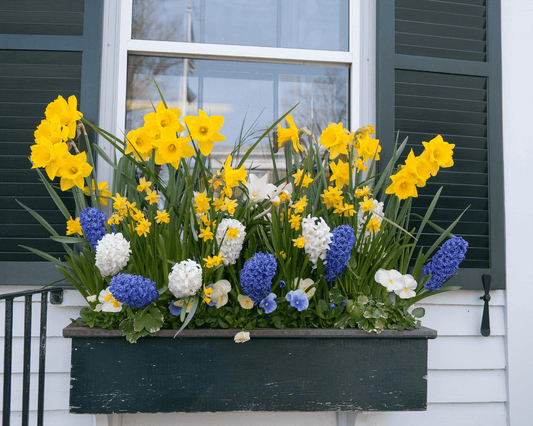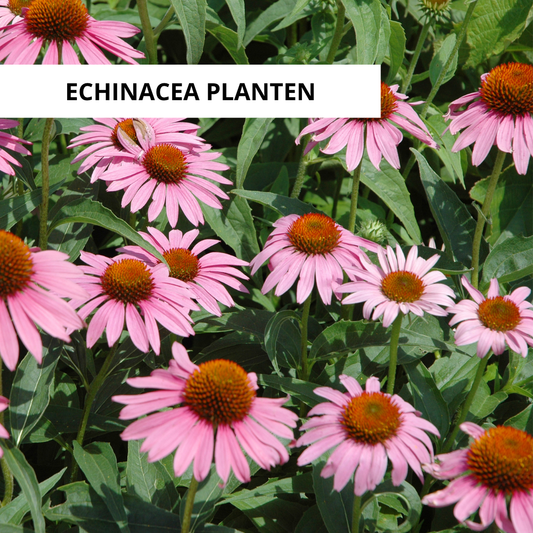
When to Plant Strawberries? The Complete Guide
Share
Strawberries are a delicious addition to any garden. They're easy to grow, require little space, and yield months of juicy fruit. This guide will help you discover when and how best to plant, care for, and overwinter strawberries —in the ground, in a pot, or in a greenhouse.
Want more planting guides?
See also:
Best time to plant strawberries (Belgium & the Netherlands)
Short answer:
In Belgium, you ideally plant strawberries in March–April or August .
In the Netherlands, August–September can be extra favourable due to the warmer autumn.
Chilled plants ( fridges ) can be planted from March to June , with a harvest about ten weeks later .
Comparison Belgium – Netherlands
| Region | Best planting time in open ground | Chilled plants | Expected harvest |
|---|---|---|---|
| Belgium | March–April or August | March–June | June–July or ±10 weeks after planting |
| The Netherlands | March–April or August–September | March–June | June–July or ±10 weeks after planting |
Planting in August or September ensures that young plants have sufficient rooting before winter, resulting in an early and rich harvest in the spring .
Distance and plant density
Distance between strawberry plants:
Keep 25–35 cm between plants and 50–60 cm between rows.
In pots: provide at least 5–7 litres of pot volume per plant, or 3 plants in a 20-litre container .
Good spacing provides sufficient light, air and space, which prevents mold and produces larger, healthier fruits.
Planting strawberries: open ground, pot and greenhouse
In open ground
-
Sun: at least 6–8 hours of sunlight per day.
-
Soil: Humus-rich, well-drained, and slightly acidic (pH 5.5–6.5). Incorporate compost or well-rotted manure.
-
Planting depth: the heart (the crown) should remain just above the ground.
-
Spacing: 25–35 cm between plants, 50–60 cm between rows.
-
Water: Water immediately after planting and keep the soil moist, but not wet.
-
Mulching: Apply a layer of straw or wood chips as soon as flower buds appear — this will keep the fruit clean.
-
Protection: Use bird nets as soon as the fruits begin to colour.
In a pot or container
-
Pot size: at least 5–7 litres per plant (hanging pot: 3–5 litres).
-
Substrate: mix 50% potting soil, 30% compost and 20% perlite.
-
Nutrition: provide liquid nutrition weekly during flowering and fruiting.
-
Water: Pots dry out faster; give small amounts more often.
In a greenhouse or conservatory
-
Planting period: end of February to March, as soon as there is sufficient daylight.
-
Temperature: allow to air out during the day to avoid mold.
-
Watering: Drip irrigation or soil moistening is ideal.
-
Advantage: early flowering and harvest, often as early as May.
Fertilizing: the right time
Spring (March–April): Give a handful of organic fertilizer (NPK 6-3-8) per m².
After harvest (July–August): light fertilization and a top layer of compost to allow the plants to recover.
In pots you can give liquid food weekly during flowering and fruiting.
Regular fertilization keeps your plants strong and extends their productive lifespan.
Growing calendar: what do you do and when?
| Month | Action |
|---|---|
| February – March | Remove old leaves, loosen the soil and add compost. |
| March – April | Plant new plants, fertilize the soil, prepare the mulch. |
| May – June | Flowering and fruiting, extra water and potassium-rich food. |
| July – August | Selecting runners or cuttings, second fertilization. |
| September | Last planting (for NL), light feeding, removing weeds. |
| October – November | Rejuvenate plants (after 3 years), apply winter protection. |
| December – January | Rest period; keep the bed weed-free and slightly moist. |
Overwintering and perenniality
Strawberries are perennial plants . With a little protection, they'll survive the winter well.
-
Cover the plants in November with a thin layer of straw or fleece .
-
In pots: place them in a sheltered place or partially bury the pots.
-
Rejuvenate the planting every three years for best harvest results.
-
Cut away old leaves in early spring.
Everbearing vs. June-bearing varieties (variety choice)
-
June-bearers give one large harvest in June–July and produce large, firm fruits.
-
Everbearing varieties (such as Ostara) bear several times a year, until October.
-
Combine both types for a long harvest period : 70% June-bearer, 30% everbearer.
Sowing strawberries (for those who like to experiment)
Although most gardeners buy young plants, you can also sow them yourself:
-
Sowing time: February – March, indoors at 18–20 °C.
-
Sowing method: Do not cover light seeds — they need light to germinate.
-
Prickling out: once the seedlings have 2–3 leaves, transplant them into separate pots.
-
Planting out: after the Ice Saints (mid-May) they can be planted outside.
Self-sowing is slower, but often produces stronger plants adapted to your garden.
Frequently asked questions about planting strawberries
When to plant strawberries in August or September?
In Belgium, it's best to plant in August ; in the Netherlands, this can be done until mid-September . The young plants will take root before winter and will produce fruit in spring.
How often should you fertilize strawberries?
Twice a year: in spring when growth begins and after harvest in summer. In pots, liquid feeding can be done more frequently.
When to put straw on strawberries?
As soon as the first flower buds are visible — this will prevent the fruits from rotting on the ground.
How much sun and water do strawberries need?
At least 6–8 hours of sun per day . The soil should always be slightly moist, but not soaking wet.
How many strawberries do you get per plant?
Average 300–800 grams per year , depending on breed and care.
When to transplant strawberries?
After three years, transplanting or replanting is recommended. Do this in August (Belgium) or August–September (Netherlands).
Are strawberries perennial?
Yes, strawberries are perennial. After three years of production, the yield diminishes, so replace them promptly.
Can you eat wild or wild strawberries?
Certainly. Wild strawberries are smaller, but more aromatic. They can spread wildly—keep them in check with mulch or edging.
Summary table
| Element | Directive |
|---|---|
| Planting time (BE) | March–April or August |
| Planting time (NL) | March–April or August–September |
| Distance | 25–35 cm (plants), 50–60 cm (rows) |
| Pot volume | 5–7 L per plant |
| Fertilization | spring + after harvest |
| Harvest period | June–October (depending on variety) |
| Perennial | yes, with winter protection |
| Cutting time | July–August |





